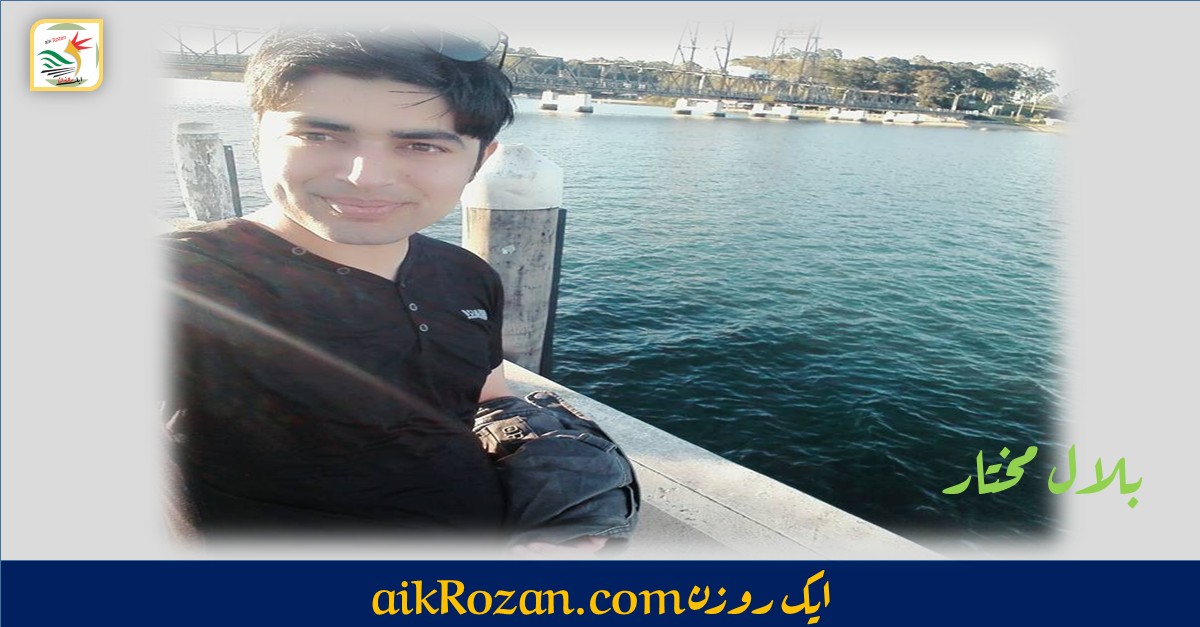
Wo Aik Bār: Jab Khudā Yaad Āyā, A Literary Analysis of Nabeel Haider’s Poetic Protest
Book review by, Bilal Mukhtar (Australia)
When a poet dares to title his collection “Khuda Koi Nahin Hai!” (There Is No God), he isn’t merely flirting with provocation. He is throwing a stone into still waters, disrupting a silence that many have grown too comfortable with. Nabeel Haider’s poetic project is not an exercise in denial, but in disturbance of complacency, of false certitudes, and of institutional hypocrisy.
From the outset, the book resists being just a collection of ghazals and poems. It demands to be read as a socio-spiritual document, where every verse is an indictment, every metaphor a mirror, and every silence a scream.
I. The Absence of God: A Theological Disillusionment
The epigraphic echo of Blood Diamond—“God left this place a long time ago”—is not just cinematic sentimentality. It is the emotional undertow of Haider’s work. The poet isn’t rebelling against God, but against the hollowness of divine invocations in a world that is increasingly godless in action.
“Dosto hum ko to is duniya ke saare ma’bood
Itne bebas nazar aaye ke Khuda yaad aaya”
Here, “ma’bood” does not merely mean gods or deities. It includes systems, ideologies, judges, leaders. When all these constructed authorities collapse into powerlessness, it is then, ironically, that the memory of a transcendent God resurfaces. Not out of faith, but out of failure. Not as salvation, but as absence.
This couplet forms a dialectic between presence and absence, between divine justice and human corruption. It is a reversal of spiritual nostalgia—not “God is everywhere,” but “where is God?”
II. Justice on Trial: The Courtroom of Conscience
Haider is, above all, a poet of protest but his protest is textured, not torrential. He doesn’t chant slogans; he cross-examines truths. In one of the book’s most brilliant textual turns, he stages a trial:
“Main adālat mein rahā sach ke sahīfe paṛhtā
Aur wo jeet gayā jhooth ki gardān ke sāth”
There’s an irony here that bleeds. The speaker is immersed in “sach ke sahīfe” (scrolls of truth), yet the verdict favors falsehood. This isn’t simply legal commentary but it’s a metaphysical tragedy, wherein truth is no longer triumphant by virtue but by manipulation.
Haider’s courtroom becomes a metaphor for the global erosion of credibility; from manipulated media narratives to judicial puppetry. The trial is not just against a man. it is against meaning itself.
III. The Ghazal as Intimate Confession
Amidst political and societal themes, Haider does not lose touch with the azmuda (tried and tested) emotional terrain of Urdu poetry like love, remorse, and human fragility. On page 98, we encounter a ghazal that is startling in its emotional transparency:
“Darguzar, sach, khalus, hamdardi
Haaye yeh jurm kyun kiye main ne”
These four words forgiveness, truth, sincerity, and compassion are framed as crimes. The speaker internalizes a world so upside-down that virtues have become violations. This is not just emotional lament; it is ethical irony.
The following couplet continues the unraveling:
“Ek ghazal tere naam karne ko
Barson soche hain qāfiyē main ne”
Here, love is not instant but it is labored over. The crafting of qāfiyē (rhymes) over years suggests that art is a form of long-suffering devotion. In this sense, poetry itself becomes a form of ibadat (worship), even if the god is now absent.
IV. Emotional Intelligence: The New Measure of Truth
In a world where what you feel often matters more than what you prove, Haider’s verses on emotional authenticity are timely:
“Ikhlās dalāil se sābit nahīn ho sakta
Qasmein nahīn kar saktiñ ik shak ko rafā jaise”
This is a textual thesis on emotional intelligence. Sincerity cannot be defended with logic. Suspicion cannot be dispelled with oaths. These lines push us to consider the intangible truths of the heart but ones that lie beyond epistemology and reside in intuition.
V. The Daughter as Redemption: A Personal Theology
In a strikingly soft departure, Haider meditates on fatherhood with spiritual tenderness:
“Kyun na rehmat kahēñ beti ko ke us kī āmad
Mere jaison ko khiradmamd banā jātī hai”
The daughter’s arrival is rehmat (mercy), not just biologically, but theologically. She becomes the vehicle of the speaker’s transformation from a flawed man to a “khiradmamd” (a person of reason). This is not sentimental idealism but it is poetic theology, where love gives birth to wisdom.
VI. Moral Hypocrisy and Religious Farce
In one of the most devastating critiques of societal religiosity, Haider writes:
“Doghlay pan pe yeh kharā hai sheher
Par ta’affun gilā sarā hai sheher”
Duplicity is not just a characteristic of the city. It is its foundation. And when Haider points out:
“Do namāzī the aaj masjid mein
Muftiyon se bharā paṛā hai sheher”
It is more than satire. It is a socioreligious dissection. Two men offer prayer, but the city is overrun with “muftis” like the self-righteous, the loud moralizers, the self-appointed guardians of truth.
Here, masjid and mufti clash not in their literal sense but in their symbolic roles: authentic faith versus performative piety.
VII. The Sialkot Tragedy: A Poetic Outcry
No analysis would be complete without acknowledging the verses on the lynching of the Sri Lankan manager in Sialkot:
“Tab talak ishq kā yeh bhūt nahīn utregā
Jab tak un ko bhī zinda jalāyā jā’ē”
This is a horrifying hypothetical and not a call to action, but a critique of the erosion of empathy. The poet is saying: until you (those who justify violence in the name of passion or belief) face the same flames, this madness will not end. It’s poetry as moral rage, haunting and human.
A Torch in the Tunnel
In the end, Khuda Koi Nahin Hai! is not a statement of atheism but it is a lamentation of absence, a critique of presence, and a call for ethical return. Haider does not ask us to forsake God. He asks us to remember what godliness once meant i.e mercy, truth, humility.
In a world where poetry often retreats into safe metaphors and decorative sadness, Nabeel Haider stands as a necessary firebrand. He refuses the luxury of ambiguity. His ghazals do not float. In fact they confront, they sting, and they demand.
This is a book not just to be read but to be argued with. To be remembered in moments when t
he world burns, and we wonder why the heavens are silent.

